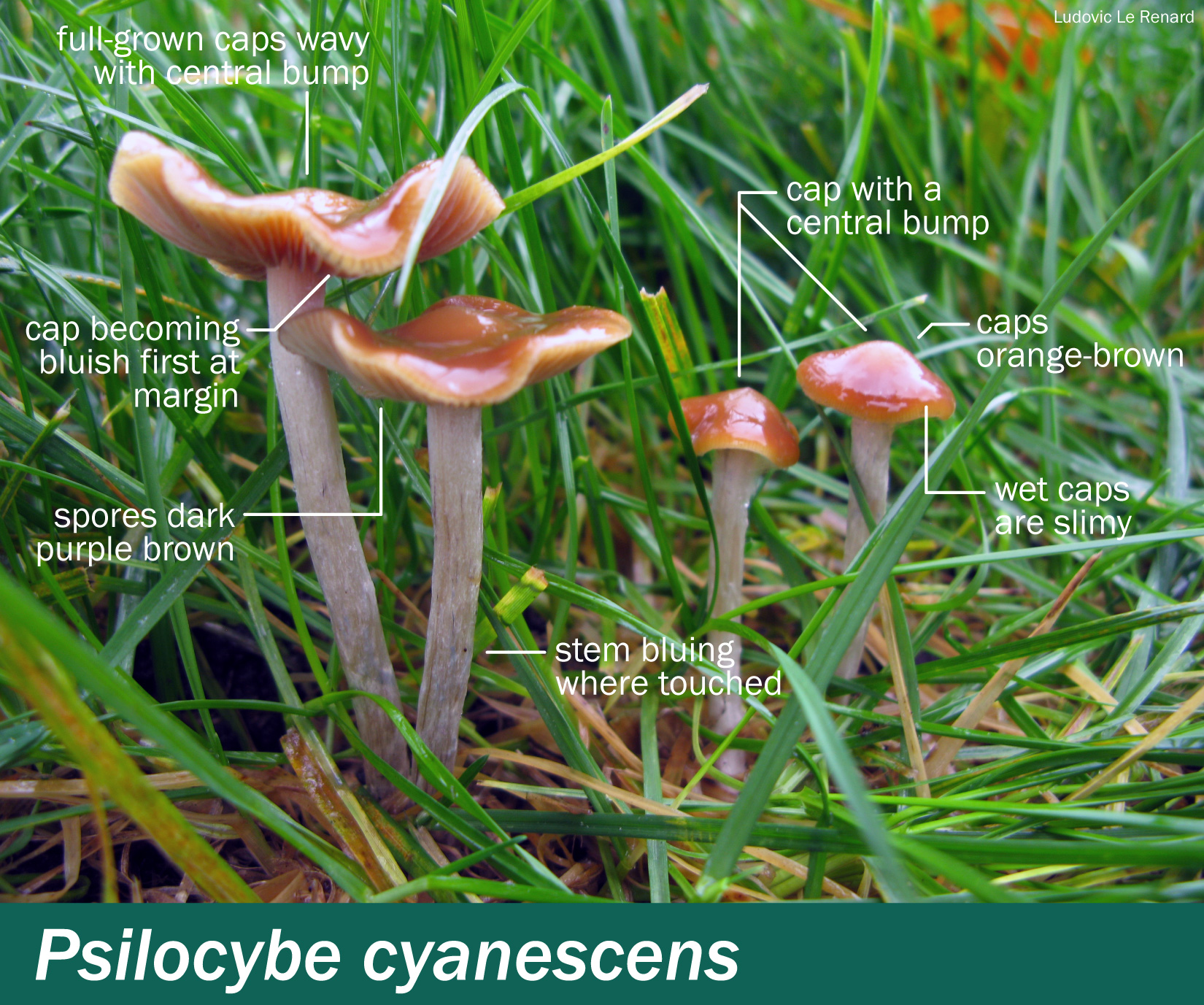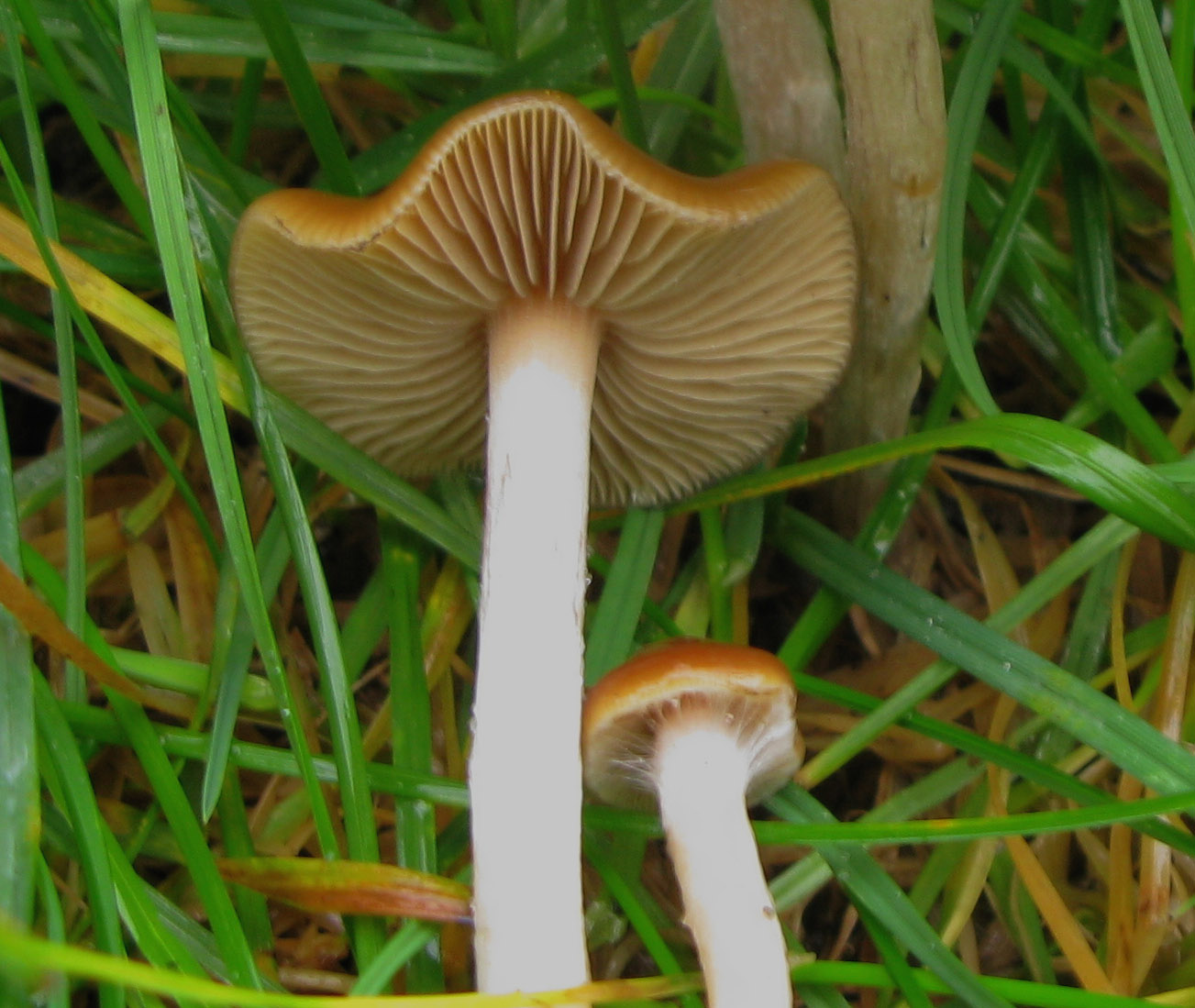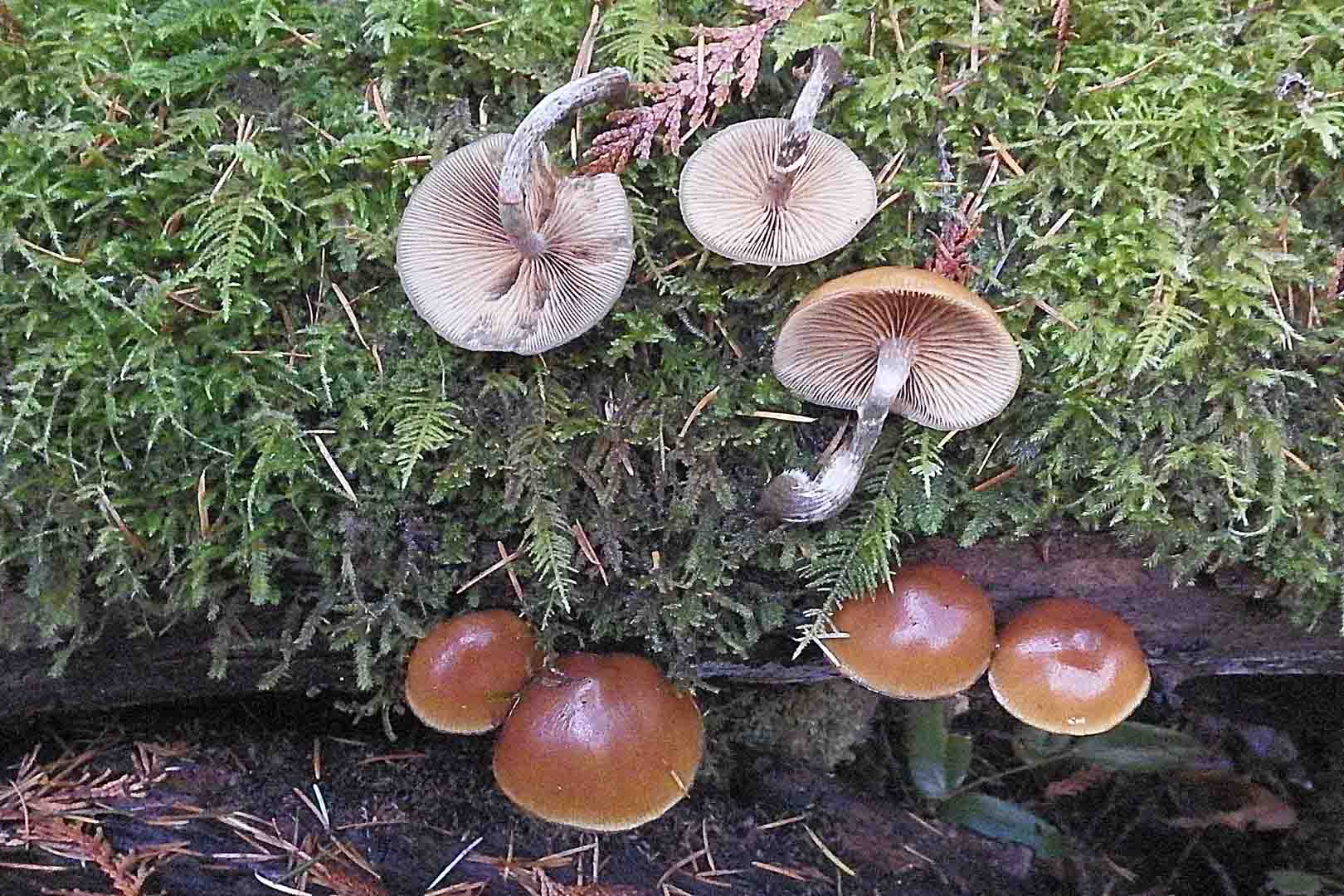Psilocybe cyanescens — Wavy caps
Odour: Like the smell of freshly cut green beans and of flour.
Cap: 1.5–6 cm in diameter, starting out rounded and closed around the stem. When opening first convex with a distinct central bump (an umbo) that remains as the cap opens out and the cap margin becomes wavy. That waviness is the hallmark for this species. The colour is orange-brown at first, but when drying out it becomes tan-brown or ochre-brown. It readily bruises a greenish blue at the margin and centre of the cap. The whole cap can become a dark blue-brown with age. The gills show through as lines on the outer part of the cap. Shiny and slimy (viscid) when wet. The margin is thick and hangs over the gills.
Gills: Moderately crowded, broadly attached to the stem or notched. Starting out pale tan, they soon develop dark spots and in the end turn completely dark purple brown. Readily turning blue when touched and damaged.
Stems: 4–9 cm long x 0.25–0.8 cm wide, cylindrical or slightly wider at top than in the middle, covered by silvery fibres. The stem turns blue-green when touched and damaged.
Ring or veil: Threads from the veil are visible on the cap margin and the stem when the cap is opening up.
Cup: None.
Spores: 10–14 x 5.5–7 µm, smooth, with a germ pore.
Habitat: In troops and flushes, often on wood chips, on woody debris, rarely in lawns, common especially in urban environments. Saprotrophic
Geographical range: In BC, mainly in the Vancouver area. In coastal western North America from southern BC to southern California, rarely reported from eastern parts of the USA, widespread in Europe.
If Galerina mushrooms are mistaken for wavy caps and eaten, serious liver and kidney damage may result. Psilocybe mushrooms are commonly cultured and sold. On the plus side, cultured mushrooms are unlikely to be misidentified and confused with other highly toxic small brown mushrooms. On the minus side, purchased mushrooms have in the past been adulterated with other hallucinogens such as LSD or phencyclidine (PCP)10. Whether adulteration is an ongoing problem is unclear.
Toxins: Psilocybin, which is metabolized to psilocin, a serotonin imitator.
Symptoms: Time of onset, 20–30 min after ingestion, usually lasting 6–8 (15) hours. Symptoms include visual and auditory hallucinations, dilation of pupils, confusion, loss of control of body movements, psychosis, nausea and vomiting. Severe reactions can include elevated levels of methaemoglobin, fever and seizures9. Children (and dogs) may be more likely to experience severe reactions.
Treatment: contact your regional Poison Control Centre if you realize you or someone you know may be having a bad reaction to wavy caps. Poison centres provide free, expert medical advice 24 hours a day, seven days a week. If possible, save the mushrooms or some of the leftover food containing the mushrooms to help confirm identification.
Poison Control:
British Columbia: 604-682-5050 or 1-800-567-8911.
United States (WA, OR, ID): 1-800-222-1222.



